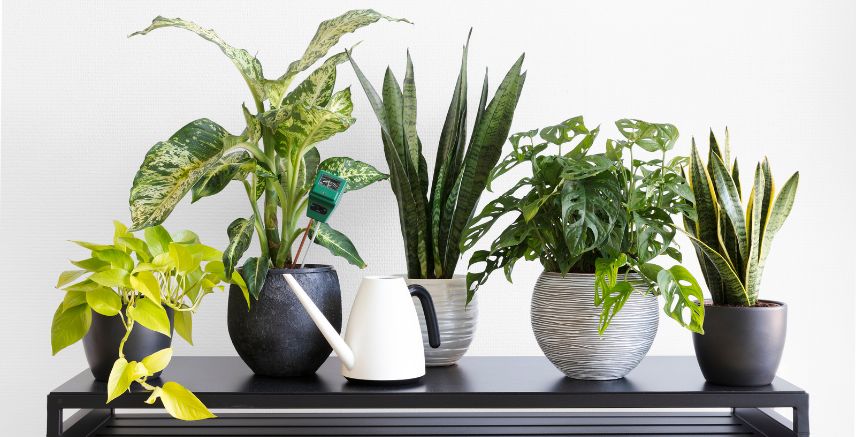Breathe Easy in Your Home
Did you know the air inside your home can sometimes be more polluted than the air outside? Between cleaning products, dust, furniture materials and even your cooking, indoor air can collect toxins that affect your health over time. But here’s the good news: some houseplants don’t just look pretty, they can actually help clean the air.
Here are 10 houseplants that help improve air quality — and they’re all easy to care for!
1. Spider Plant
This plant is almost impossible to kill, making it great for beginners. It thrives in indirect sunlight and doesn’t need much water. Spider plants are known to remove formaldehyde and carbon monoxide from the air. Plus, they’re safe for pets!
2. Peace Lily
Peace lilies are beautiful and elegant, with dark green leaves and white flowers. They’re excellent at removing toxins like benzene, formaldehyde and trichloroethylene. They also help increase humidity, which can reduce dry skin and irritated eyes. Just keep in mind they’re toxic to pets if eaten.
3. Snake Plant
Also called “mother-in-law’s tongue," this hardy plant is famous for being low-maintenance. It can survive low light and irregular watering. The snake plant is a powerhouse when it comes to filtering out formaldehyde and benzene, and it’s one of the few plants that releases oxygen at night — perfect for the bedroom.
4. Aloe Vera
Aloe isn’t just good for soothing sunburns — it also helps purify the air. These plants help remove formaldehyde and benzene, often found in household cleaners. It needs bright, indirect sunlight and very little water, making it ideal for sunny kitchens or windowsills.
5. Boston Fern
The Boston fern is great for improving humidity and removing indoor air pollutants like formaldehyde and xylene. It loves a humid environment, so it’s perfect for bathrooms or kitchens. Keep the soil moist and give it indirect sunlight.
6. Rubber Plant
This trendy plant not only adds style to your living space, it also helps remove pollutants like formaldehyde from the air. Rubber plants are relatively easy to care for — they like bright, indirect light and moderate watering. Bonus: they grow tall over time and can become a statement piece in any room.
7. English Ivy
English ivy is known for its ability to remove airborne mold and fecal particles, making it a great choice for bathrooms. It also absorbs formaldehyde, benzene and carbon monoxide. Just be cautious if you have pets — it’s toxic if ingested.
8. Bamboo Palm
Also known as the reed palm, this tropical beauty not only freshens the air but also adds a splash of greenery. It’s excellent at removing benzene and formaldehyde, and it naturally adds humidity to the room. It prefers indirect light and regular watering.
9. Golden Pothos
Also called “devil’s ivy," this vine is practically indestructible and grows quickly. It’s a top performer at removing indoor air toxins like formaldehyde, xylene and benzene. Hang it in a basket or let it trail along a shelf. Just keep it out of reach of pets, as it’s toxic if eaten.
10. Dracaena
There are several types of dracaena plants, all of which are great air purifiers. They’re especially effective at removing pollutants like xylene, trichloroethylene and formaldehyde. They come in many varieties with colorful leaves and need moderate light and water. However, they’re not pet-friendly.
A Few Extra Tips
- Don’t overwater. Most houseplants prefer slightly dry soil between waterings. Too much water can lead to root rot.
- Wipe the leaves. Dust on leaves can block a plant’s ability to absorb air pollutants. Gently wipe them with a damp cloth now and then.
- Choose the right plant for your space. Consider how much light and humidity your home gets, and whether you have pets or small children.
Many houseplants are easy to care for, and add a nice pop of color to rooms. Adding houseplants that improve air quality to your home is easier than you think!
Keep reading to learn how to remove smoke smells from your furniture.
